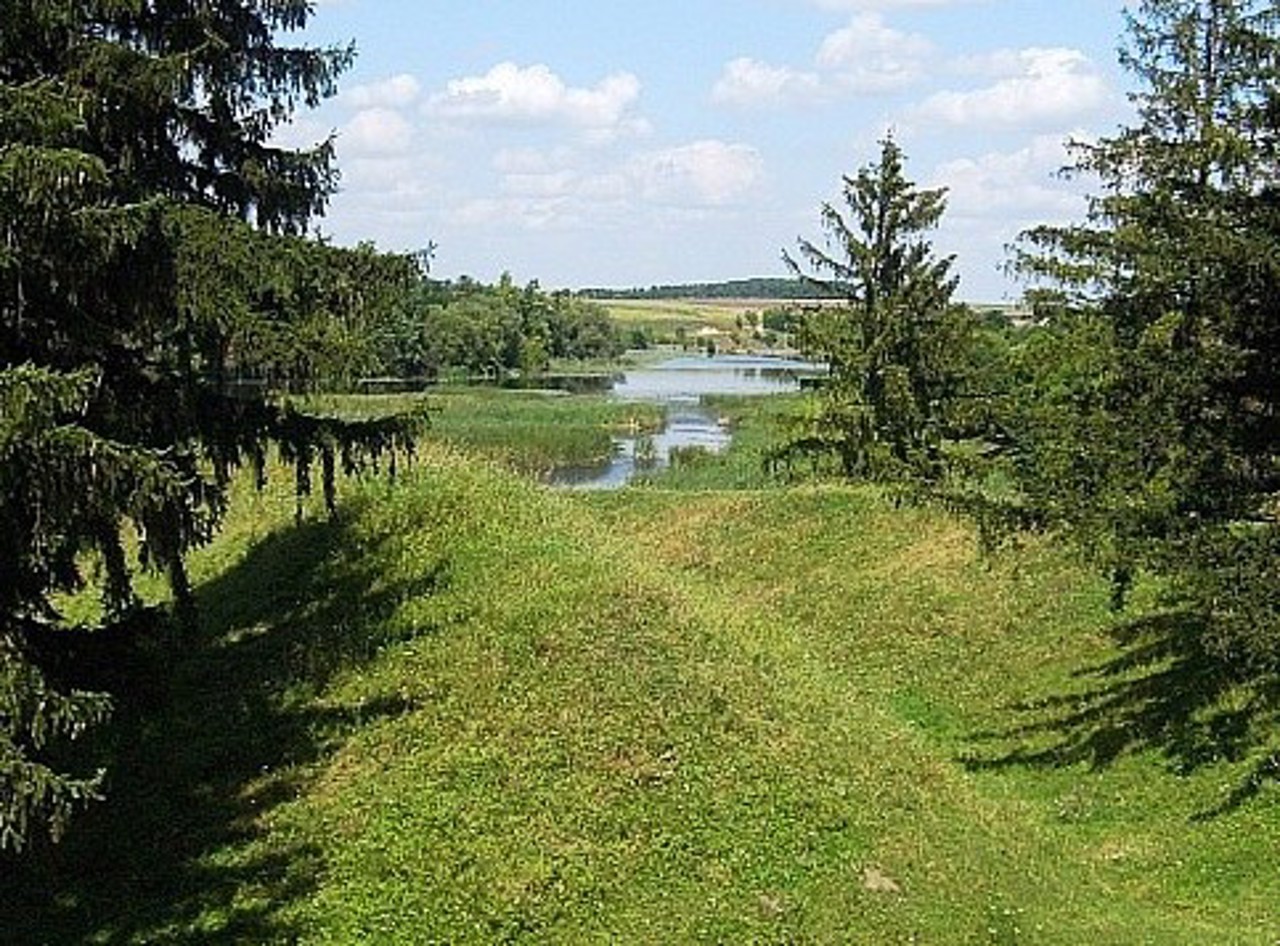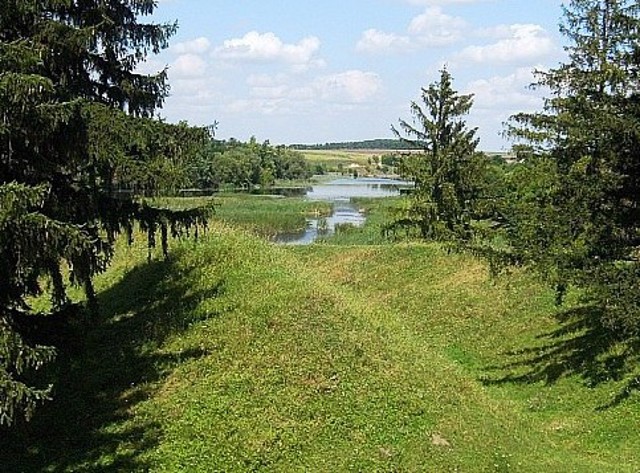Functional temporarily unavailable
Hubyn Hillfort, Hubyn
Historic area
Archaeological site
General information about Hubyn Hillfort (Hubyn)
The ramparts of the Hubyn chronicled ancient Rus hillfort are located on the high bank of the Sluch River, opposite from the center of the village of Hubyn.
In the 12th and 13th centuries, Hubyn was one of the largest cities of the Bolokhiv Land - an ancient Rus historical region in the upper reaches of the Pivdennyi Buh bordering the Galicia-Volyn and Kyiv principalities. It was destroyed in 1241 by Prince Danylo Halytskyi in revenge for the participation of the Bolokhiv princes in the campaign to Bakota. Since then, the city has not been rebuilt, but a village of the same name arose in its place.
Since 1977, archaeological research has been conducted at the Hubyn hillfort. Many artifacts were found: elements of plows, horseshoes, sticks, stone axes, pendants and other wome ...
The ramparts of the Hubyn chronicled ancient Rus hillfort are located on the high bank of the Sluch River, opposite from the center of the village of Hubyn.
In the 12th and 13th centuries, Hubyn was one of the largest cities of the Bolokhiv Land - an ancient Rus historical region in the upper reaches of the Pivdennyi Buh bordering the Galicia-Volyn and Kyiv principalities. It was destroyed in 1241 by Prince Danylo Halytskyi in revenge for the participation of the Bolokhiv princes in the campaign to Bakota. Since then, the city has not been rebuilt, but a village of the same name arose in its place.
Since 1977, archaeological research has been conducted at the Hubyn hillfort. Many artifacts were found: elements of plows, horseshoes, sticks, stone axes, pendants and other women's jewelry. These are unsurpassed examples of jewelry art of that distant time. One of the most valuable finds is the lead seal of Prince Volodymyr Vsevolodovych of Novhorod, dated 1136.
The finds are exhibited in the Starokostiantyniv Museum of Local History.
Вали Губинського літописного давньоруського городища розташовані на високому березі річки Случ, протилежному від центру села Губин.
У XII-XIII сторіччях Губин був одним із найбільших міст Болохівської землі – давньоруської історичної області у верхів'ях Південного Бугу, що межувала з Галицько-Волинським та Київським князівствами. Знищене у 1241 році князем Данилом Галицьким у помсту за участь болохівських князів у поході на Бакоту. З того часу місто не відновлювалося, але на його місці виникло однойменне село.
З 1977 році на Губинському городищі ведуться археологічні дослідження. Знайдено безліч артефактів: елементи плугів, підкови, удила, кам'яні сокири, підвіски та інші жіночі прикраси. Це неперевершені зразки ювелірного мистецтва тієї далекої пори. Одна з на ...
Вали Губинського літописного давньоруського городища розташовані на високому березі річки Случ, протилежному від центру села Губин.
У XII-XIII сторіччях Губин був одним із найбільших міст Болохівської землі – давньоруської історичної області у верхів'ях Південного Бугу, що межувала з Галицько-Волинським та Київським князівствами. Знищене у 1241 році князем Данилом Галицьким у помсту за участь болохівських князів у поході на Бакоту. З того часу місто не відновлювалося, але на його місці виникло однойменне село.
З 1977 році на Губинському городищі ведуться археологічні дослідження. Знайдено безліч артефактів: елементи плугів, підкови, удила, кам'яні сокири, підвіски та інші жіночі прикраси. Це неперевершені зразки ювелірного мистецтва тієї далекої пори. Одна з найцінніших знахідок - свинцева печатка новгородського князя Володимира Всеволодовича, датована 1136 роком.
Знахідки експонуються у Старокостянтинівському історико-краєзнавчому музеї.
Practical information about Hubyn Hillfort (Hubyn)
Last update
5/23/2025
| Categories | Historic area, Archaeological site |
|---|---|
| Date of foundation | XII-XIII centuries |
| Address |
Hubyn |
| Coordinates |
49.7754722° N, 27.4468946° E
|
| Additional services |
Аccessibility information
Have you visited Hubyn Hillfort in Hubyn?
Add practical or descriptive information, photos, links
What to see, where to go next?





